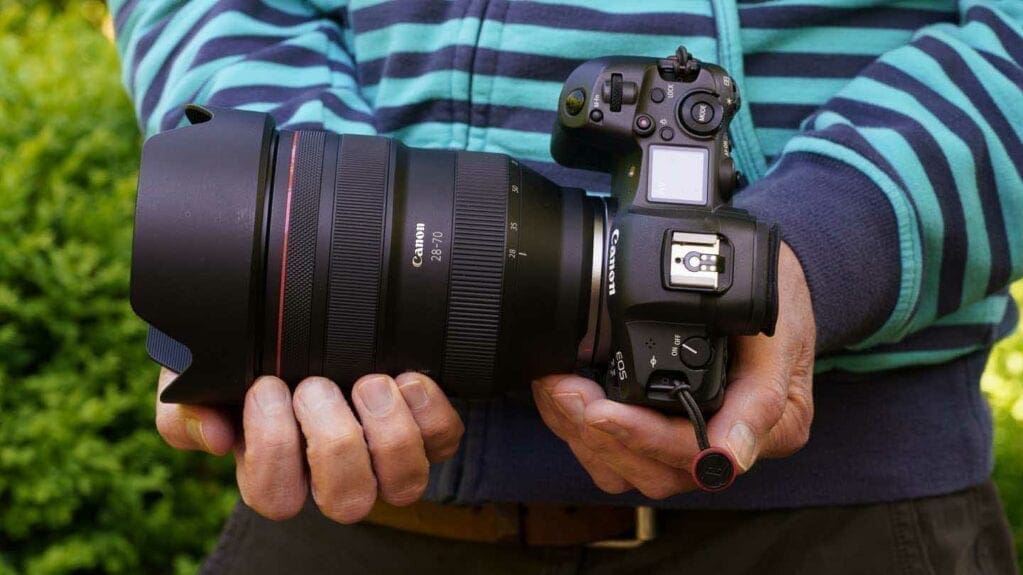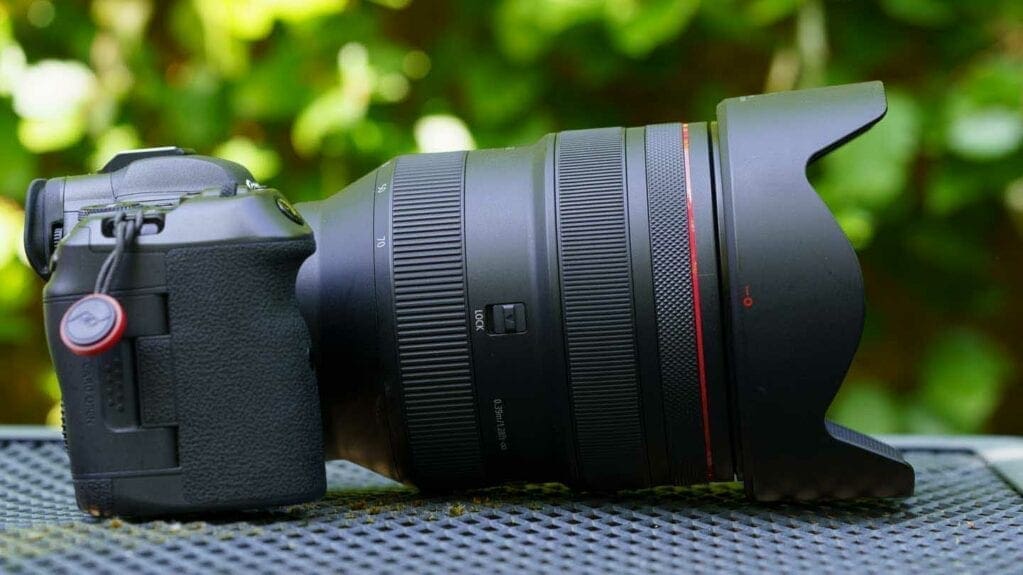Although you can check the specifications and see that the Canon RF 28-70mm F2L USM weighs 1430g and measures 103.8 x 139.8mm, it’s only when you hold it, or compare it to another lens that you realise just how big it is. It’s 530g heavier than the Canon RF 24-70mm F2.8L IS USM, for example, which measures 88.5x 125.7mm. And it’s 360g heavier than the RF 70-200mm F2.8L IS, which measures 89.9 x 146mm.
It also has a 95mm filter thread, which is likely to mean that you need to upgrade your filters.
For comparison, here’s the Canon RF 28-70mm f2L USM alongside the Sigma 28-70mm f2.8 DG DN | Contemporary. The Sigma 28-70mm f2.8 DG DN C is a compact lens that is 1stop slower but is designed to deliver high optical performance that is close to the standard of the company’s Art lenses.

Sigma 28-70mm f2.8 DG DN C vs Canon RF 28-70mm F2L USM
I used the RF 28-70mm F2L USM on the Canon R5, which itself weighs 650g, making the total weight over 2Kg. That is a lot for a ‘standard’ zoom lens set-up, but the word standard doesn’t seem applicable to a zoom lens with a constant aperture of f/2.0.
The RF 28-70mm F2L USM also has three control rings, one for the focal length with markings at the 28, 35, 50 and 70mm points, one further forward for manual focusing and a front ring that can be customised to adjust one of a long list of parameters. I used the control ring to adjust exposure compensation, which is very handy with such a big, heavy lens as it needs a supporting hand and the ring falls within easy reach of your left thumb and forefinger.
It would be nice to see a button on the lens to enable the purpose of the control ring to be switched quickly to control something else, perhaps the aperture setting, but there isn’t.
All three of the dials have a nice action, requiring positive force but no real effort. One disappointment with the control ring is that there’s no de-click control. You can send the lens to Canon to have it de-clicked for a fee, but you can’t use it with clicks for photography and de-clicked for video at will.






